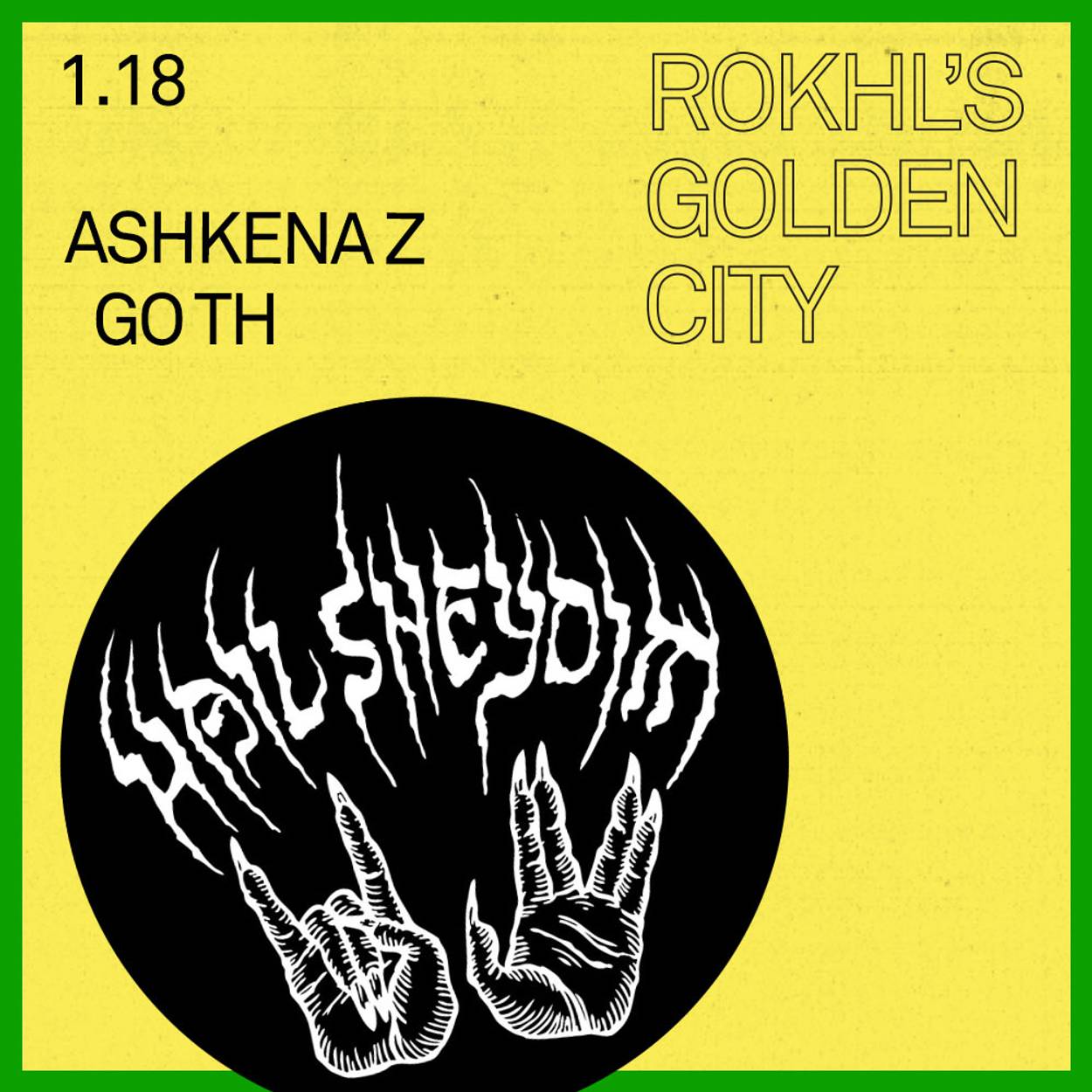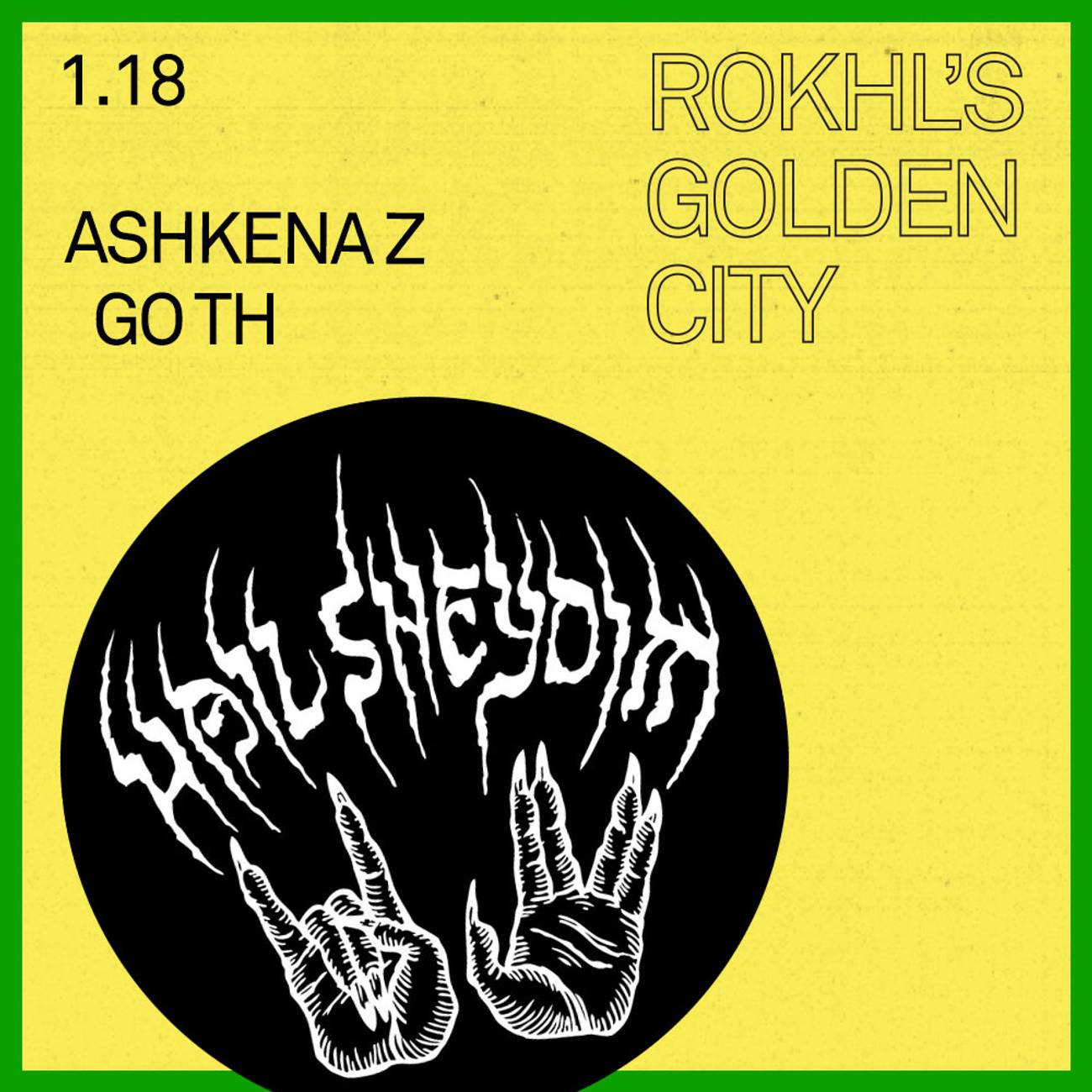Have Yourself a Yiddish Little Christmas
Rokhl’s Golden City: The rise of ‘nitl nakht,’ and the outsider appeal of the supernatural




Though Chinese food and movies will always be a classic combination, to my surprise, in 2021 a “new” American-Jewish-Christmas ritual was ascendant on social media: nitl nakht, or the Yiddish Christmas Eve.
Long ago in Eastern Europe, Jewish communities “observed” the evening with a set of unusual (and in some cases, bizarre) customs. Best known today is the custom of refraining from learning Torah. Instead of learning, games like chess and cards were common. And if you were uneasy at the thought of too much fun, you could use the time to rip toilet paper for use on shabes.
The question is, why did this unique set of Jewish Christmas customs come about? It wasn’t just because Chinese food hadn’t been invented yet (though scholars are conflicted on this point). Rather, nitl nakht was both the Jews’ reaction to the dramatic seasonal traditions of their Christian neighbors, as well as an expression of their complex and uncomfortable beliefs about Jesus. For example, Jews believed that learning Torah in the name of the deceased brought the deceased benefit. It stands to reason, then, as folklore scholar Itzik Gottesman wrote in the Forverts, “doing anything related to Torah study on Christmas might be misinterpreted as honoring Jesus.” But that’s only the beginning.
Nitl nakht customs drew on a number of Talmudic and apocryphal texts that, as Shai Alleson-Gerberg writes, depicted Jesus as “born of incest,” a contemptible character who “stole the Ineffable Name of God from the Temple, and made improper use of it until he was caught and sentenced to death as a blasphemer …” This inverted, satirical figure of Jesus was so associated with excrement and bodily fluids that, among other things, Jewish children on Christmas Eve feared going to the bathroom, where he was believed to be lurking on that night.
Pretty gnarly, huh? And yet, by Christmas 2021, nitl nakht had officially made it into non-frum, non-Yiddishist, mainstream Jewish social media, which was apparently tired of fighting over the legitimacy of the Hanukkah bush. But if the history of nitl nakht reveals an extremely weird and uncomfortable legacy of anti-Christian sentiment, how do you boil that down to clickable content for the liberal minded global citizens of today?
For at least three popular young Jewish social media influencers I observed, the answer was to simply erase its anti-Christian sentiment altogether. (I’m not naming or linking to these particular users because my point here is not to shame or embarrass them.) They describe nitl nakht as a direct response to Christian persecution. One post, with over 7,000 likes, states that Christmas was a time of particular anti-Jewish violence, and that it was the rabbis who created nitl nakht to convince people to stay home. But what we know about the history of nitl nakht shows the very opposite: Rather than being instituted by the religious authorities, nitl nakht was most certainly a gradual development of popular folk practices, none of which served rabbinical interests. Think about it: Why would the rabbis encourage a practice that denigrated the beliefs of those very same neighbors they were purportedly hiding from?
And while there have been instances of mass violence linked to Christmas, it was not Christmas, but Easter, and especially Good Friday, that European Jews feared the most. That was when a chant called “the Reproaches” would be sung, in which “the voice of God accused the Jewish people of faithlessness in rejecting Jesus as their Messiah and crucifying him instead.”
At first glance, these influencer posts about nitl nakht seem to be merely reinforcing a narrative that is already painfully familiar to Jews of all ages: victimization and fear. But what’s noteworthy about the nitl nakht discussion is that it is taking place within a much larger discourse, one written from the margins by young Jews whose religious and political beliefs are heterodox, and who often identify as queer. They’re alienated by the gatekeeping done by anti-intermarriage hysteria and Zionist purity tests, not to mention a deracinated, rationalist American Judaism emptied of the mysterious and supernatural. I would go so far as to say that these young Jews are reacting to what I might call the disenchantment of the modern Jewish world. (Thanks, Haskalah!) Folk practices, once trashed by the Jewish enlightenment, are now the treasure patiently waiting for those making new Jewish identities.
For young people left cold by Hanukkah’s uneasy position as the “Jewish Christmas,” nitl nakht is appealing because it is entirely other: a rooted Jewish practice shaped by Christmas, but most certainly not meant to compete, or imitate. Even presented in stripped down form, the revelation of a newly discovered “holiday” makes an audacious claim to enlarging the Jewish calendar, made all the more audacious by doing so in Yiddish. It points the reader toward Eastern Europe, not merely as a site of genocide and mass migration, but as an accessible source of nonnormative Jewish practice and folklore.
Nonetheless, despite this recent burst of interest, nitl nakht is of limited use as material to be fashioned into a (post)-modern Jewish identity. At its heart lies an ugly, illiberal history of mutual animosity, one at odds with modern liberal values. Not to mention that the demographic reality of American Jewish life today has a large part of American Jewry with at least one non-Jewish family member. How are you going to explain to them that you’re hosting a Christmas Eve reading of the insanely offensive anti-Jesus apocrypha Toldos Yeshu?
Far more attractive is the vast cosmos of the Jewish supernatural, especially as it flourished in Eastern Europe. Blima Books, a self-described “small Jewish press for Radical Jewish Literature in Jerusalem and Berlin,” just put out a new issue of their exquisite zine The Barnacle Goose. This new issue is dedicated to the theme of Jewish demons. The letter from the editors invites the reader to this seductive, though slightly disreputable realm: “Perhaps the pages which follow can serve as an incantation bowl, its lines of text circling and swerving around potent images. What happens if we summon the demons? How can we acknowledge their atmospheric presence? Invite them to speak. Relearn their spells.”
Indeed, some young Jews have already begun to take up that invitation.
Ezra Rose is a freelance illustrator, zinester, part-time educator, and small farmer in western Massachusetts. I recently stumbled upon their demon-infused Jewish art on Twitter and became an instant fan. Their work merges Goth aesthetics with Ashkenaz in ways that are both delightfully dramatic and subtle. Their Six Songs zine draws on a mystical work describing the extreme dangers awaiting those who hear the angels sing. Panel borders framing the suitably gruesome descriptions are full of details inspired by Ashkenazi gravestone carvings.
In a recent conversation, they told me that their artwork is part of a reconnection to Judaism: “I had sort of turned my back on something that I thought had no place for me. As a queer and trans person, I just had no model for what my participation in Jewish life could even look like—it wasn’t that the communities I grew up in were hostile to me (they were generally liberal), but that queerness and transness didn’t appear to even exist there.”
And what is the appeal of supernatural entities like golems, sheydim, and the Shamir Worm? “I’m really interested in supernatural and folkloric entities and creatures, maybe because I find it a lot easier to connect to them? Gender is less of a barrier to my identification with these things. It took me a long time to realize that part of the reason I never really connected to more mainstream Jewish stories is that I never saw a role for myself in them, because all the human roles are gendered.”
Orah Ruth is another young Jewish artist claiming the Yiddish supernatural for their art. She was raised in a “post-denominational” environment and began playing klezmer music, and learning Yiddish, as an adult. As she recently told me, “I’m inspired by the balance of mystical/practical in Eastern European Judaism and halachically chaotic.”
Already experienced in creating Tarot decks with traditional imagery, she is currently working on a Yiddish-infused, 22-card trumps deck. Why tarot? “I wanted a deck that has a similar charm [to the standard Rider-Waite-Smith], but a context where I can see myself and my loved ones.” For the images, she’s been using Yiddish woodcuts available in online archives, and taking cards and themes from the old French-style tarot and translating or adapting them into Yiddish.
Her work is not just inspired by folklore, but by her own Daf Yomi practice: “The way in which the Gemara (and following through to Ashkenzi writers through today) effortlessly weave the practical with the ritual, the mundane and the sacred, the natural and the supernatural into one continuous undifferentiated worldview has inspired me to make the effort to do the same in my own life.”
What both artists describe is how their art, and their engagement with Yiddish and Jewish folklore, has allowed them to fashion a holistic Jewish identity that is both very modern, and deeply rooted in tradition. It’s work to which we should be paying attention. As the editors of the Barnacle Goose wrote in the “Demon” issue:
“Among the many later Jewish terms for demons, perhaps the most troubling is hitzonim—literally, Outsiders or External Ones. This is a xenophobic, metaphysical projection. ‘Demonization’ becomes more than a mere turn of phrase. At our worst, we have not just disassociated ourselves from the demons, we have entirely denied their existence. We are overdue for a reckoning. The demons we’ve disinherited may very well be our future.”
ALSO: On Jan. 19 the Taube Center will present ”Shades of Heroism: Women’s Experiences in the Holocaust.” Dr. Katarzyna Person and Dr. Karolina Szymaniak will share stories of Polish Jewish women during the Holocaust as recorded and preserved in the Underground Archive of the Warsaw Ghetto, known also as the Ringelblum Archive. Register here … Opening on Jan. 22, New Yiddish Rep presents Di Froyen (The Women). Featuring an all-female cast and female director, the play tells the story of a woman from Hasidic Brooklyn who has fled an abusive marriage. Through Jan. 30, at Theater for the New City … On Jan. 27, the Initiative in Holocaust, Genocide, Memory Studies at the University of Illinois at Urbana-Champaign will observe International Holocaust Remembrance Day with a screening of Black Honey: The Life and Poetry of Avraham Sutzkever. There will be a discussion afterward with Hadas Kalderon, granddaughter of Avraham Sutzkever. Register here … Also on Jan. 27: Avrom Sutzkever’s memoir From the Vilna Ghetto to Nuremberg: Memoir and Testimony was originally published in Yiddish in 1946. It has finally been translated into English by Justin Cammy. Dr. Cammy will join YIVO Executive Director Jonathan Brent for a book talk. Register here … On Jan. 27, KlezKanada will present “Silent Tears: The Last Yiddish Tango,” a world premiere concert of new Yiddish songs based on testimonies of Canadian Holocaust survivors, featuring music by Aviva Chernick, Lenka Lichtenberg, Payadora Tango, and Olga Mieleszczuk. Register here... On Feb. 3 my friend, actor-director Eleanor Reissa, will celebrate the publication of her new book, The Letter’s Project: A Daughter’s Journey. She will be in conversation with journalist Sandee Brawarsky at YIVO. Register here … On Feb. 24 the Dorot Jewish Division of the NYPL will offer “Introduction to Yiddish Music Research.” This free online class will introduce users to Yiddish music research, including primary sources and how to find them. More information here.
Rokhl Kafrissen is a New York-based cultural critic and playwright.